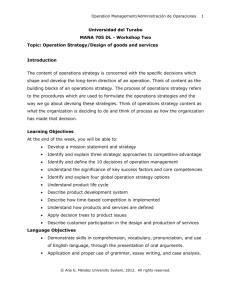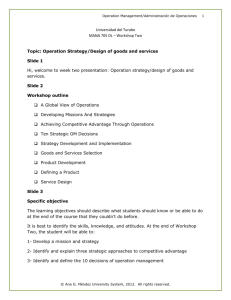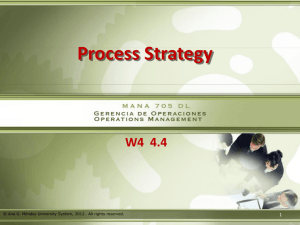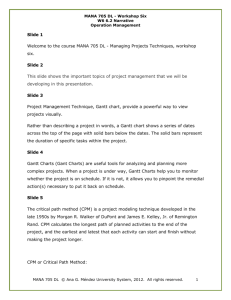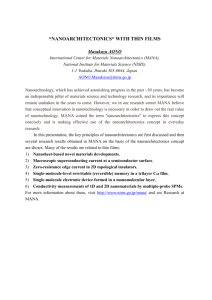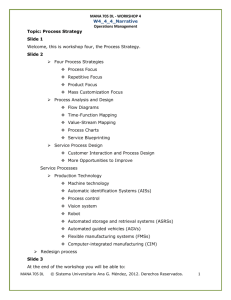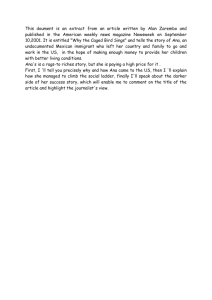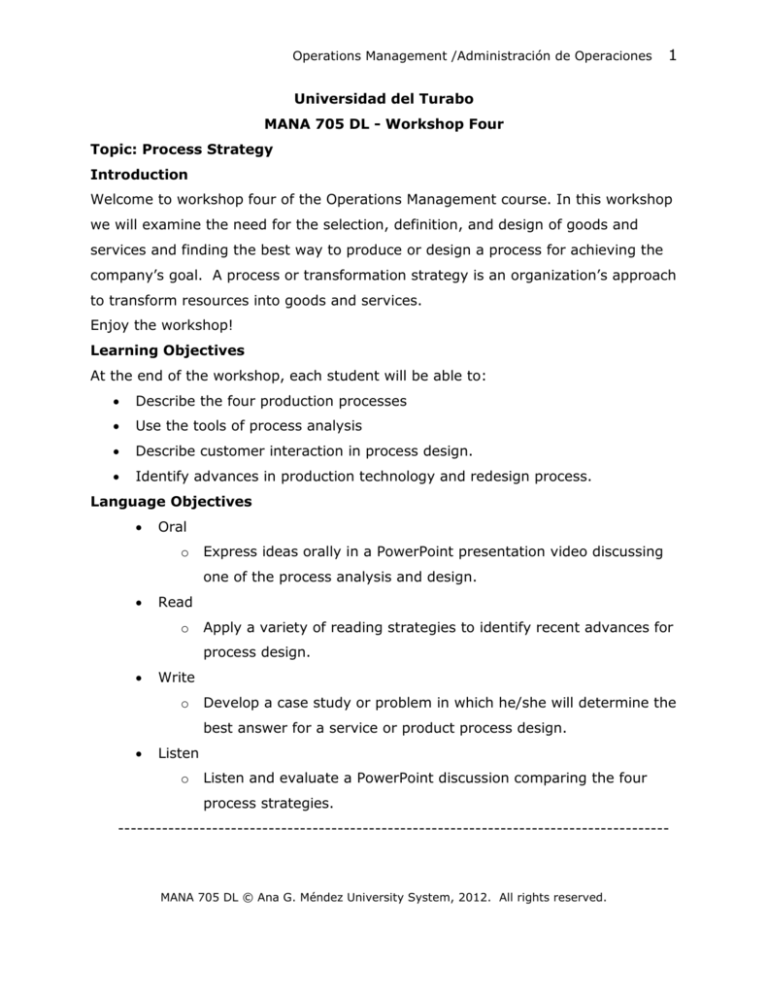
Operations Management /Administración de Operaciones
1
Universidad del Turabo
MANA 705 DL - Workshop Four
Topic: Process Strategy
Introduction
Welcome to workshop four of the Operations Management course. In this workshop
we will examine the need for the selection, definition, and design of goods and
services and finding the best way to produce or design a process for achieving the
company’s goal. A process or transformation strategy is an organization’s approach
to transform resources into goods and services.
Enjoy the workshop!
Learning Objectives
At the end of the workshop, each student will be able to:
Describe the four production processes
Use the tools of process analysis
Describe customer interaction in process design.
Identify advances in production technology and redesign process.
Language Objectives
Oral
o
Express ideas orally in a PowerPoint presentation video discussing
one of the process analysis and design.
Read
o
Apply a variety of reading strategies to identify recent advances for
process design.
Write
o
Develop a case study or problem in which he/she will determine the
best answer for a service or product process design.
Listen
o
Listen and evaluate a PowerPoint discussion comparing the four
process strategies.
----------------------------------------------------------------------------------------
MANA 705 DL © Ana G. Méndez University System, 2012. All rights reserved.
Operations Management /Administración de Operaciones
2
Content
4.1 Four Process Strategies
A process or transformation strategy is an organization’s approach to transform
resources into goods and services. These goods or services are organized around a
specific activity or process.
Every organization will have one of the four process strategies:
a. Process focus in a factory; these processes might be departments devoted
to welding, grinding, and painting. In an office the processes might be
accounts payable, sales, and payroll. In a restaurant, they might be bar,
grill, and bakery. The process focuses on low volume, high variety
products are also called job shop. These facilities are process focus in
terms of equipment, layout, and supervision.
b. Repetitive focus; falls between the product and process focus. The
repetitive process is a product-oriented production process that uses
modules. Modules are parts or components of a product previously
manufactured or prepared, often in a continuous process. Fast-food firms
are an example of repetitive process using modules.
c.
Product focus, are high volume, low variety processes; also called
continuous processes. Products such as light bulbs, rolls of paper, beer,
and bolts are examples of product process. This type of facility requires a
high fixed cost, but low costs. The reward is high facility utilization.
d. Mass customizations focus; is rapid, low-cost production that caters to
constantly changing unique customer desires. This process is not only
about variety; it is about making precisely what the customer wants when
the customer wants it economically. Achieving mass customization is a
challenge that requires sophisticated operational capabilities.
-----------------------------------------------------------------------------------------4.2 Process Analysis and Design Tools
When an organization analyzes and designs the process they use to transform their
goods and services they ask the following questions:
Is the process designed to achieve competitive advantage in terms of
differentiation, response, or low cost?
MANA 705 DL © Ana G. Méndez University System, 2012. All rights reserved.
Operations Management /Administración de Operaciones
Does the process eliminate steps that do not add value?
Does the process maximize customer value as perceived by the
3
customer?
Will the process increase orders?
The following tools are simple ways to understand the complexity of a process
design and redesign.
1. Flow Diagrams are a schematic or drawing of the movement of material,
product, or people.
2. Time-Function Mapping is a process in a flow diagram with time added on the
horizontal axis. This tool is also called process mapping. The nodes indicate
the activities and the arrows indicate the flow direction, with time on the
horizontal axis. This type of analysis allows users to identify and eliminate
waste such as extra steps, duplication, and delay.
3. Value-Stream Mapping (VSM) is a variation of time-function mapping;
however, value-stream mapping takes an expanded look at where value is
added (and not added) in the entire production process, including the supply
chain. The idea is to start with the customer and understand the production
process, but value-stream mapping extends the analysis back to suppliers.
4. Process Charts use symbols, time, and distance to provide an objective and
structured way to analyze and record the activities that make up a process.
These charts allow focusing on value-added activities.
5. Service Blueprinting is a tool used in manufacturing products with a high
service content. This process focuses on the consumer and the provider’s
interaction with the consumer.
Each process analysis tool has its strengths and variations. Flowcharts are quick
ways to view the big picture and try to make sense of the entire system. Timefunction mapping adds some rigor and time element. Value-stream mapping
extends beyond the immediate organization to consumer and suppliers. Process
charts are designed to provide a much more detailed view of the process, adding
items such as value-added time, delay, distance, storage, and so forth. Service
blueprinting, on the other hand, is designed to help us focus on the customer
interaction part of the process.
MANA 705 DL © Ana G. Méndez University System, 2012. All rights reserved.
Operations Management /Administración de Operaciones
4
---------------------------------------------------------------------------------------4.3 Service Process Design
Service process design, by its nature, implies that some interaction and
customization is needed. The more the manager designs the process to
accommodate special requirements, the more effective and efficient the process will
be. Customer interaction and process design will depend on the type of service
organization Service processes provide more opportunities for improvement. Layout
design is an integral part in many service processes, particularly in retailing, dining
and banking. Since layout design is such an integral part of many services, it
provides continuing opportunity for increasing orders.
Human Recourses is important particularly because of the recruiting issue and
training. This can have a tremendous impact on the overall process performance.
----------------------------------------------------------------------------------------4.4 Production Technology and Redesign Process
The nine areas of Production Technology are:
1. Machine technology
2. Automatic identification systems (AIS) Process control
3. Vision systems
4. Robots
5. Automated storage and retrieval systems
6. Automated guided vehicles
7. Flexible manufacturing systems
8. Computer integrated manufacturing
Process Redesign is fundamental rethinking of business processes to bring about
dramatic improvements in performance. Redesign also focuses on those activities
that cross functional lines.
MANA 705 DL © Ana G. Méndez University System, 2012. All rights reserved.
Operations Management /Administración de Operaciones
To view the PowerPoint presentation with audio, please click the link:
MANA 705 DL_W4_4_4 Process Strategy presentation
To access the narrative of the presentation in Word, click on the link
MANA 705 DL_W4_4_4_Narrative (Document MS Word)
To access the electronic link, follow these instructions:
Place the cursor over the link and simultaneously press the
CTRL + click.
Forum for Doubts:
If you have any questions, access
Comunicación/Communication link, and press
Workshop Four: Doubts and Questions where we can discuss
any doubts.
To participate, click on the forum title.
--------------------------------------------------------------------------------------
MANA 705 DL © Ana G. Méndez University System, 2012. All rights reserved.
5
Operations Management /Administración de Operaciones
6
Tasks/Activities: Workshop Four
Task 4.1: Power Point with audio (oral presentation)
Instructions
1. Look for the rubric Appendix F - Rubric to Evaluate Video or PowerPoint
Presentation Individual/Group to evaluate Video or PowerPoint with
audio in the syllabus. Access Blackboard e-lab tutorial on how to present
PowerPoint with audio.
2. Prepare a presentation with a minimum of 10 slides using MS PowerPoint
with audio.
3. Your presentation will explain an organization process strategy from one of
the four process strategies:
a. process focus
b. repetitive
c. product
d. mass customization focus.
4. You will also pick one of the tools below and explain how it works with the
company you are presenting. It could be, for example, a department process
such as a production process, product, or service they offer.
a. Flow Diagram
b. Time function mapping
c. Value stream mapping
d. Process chart
e. Service Blueprint
5. Make sure your presentation is APA Style, version six. Remember to
reference the source of any chart or graph used from web sites, books,
journal, and so forth.
6. Save your presentation as follows: T4.1.name.last name.
7. Send the document accessing Tareas/Tasks, click Workshop Four and
identify T4.1 PPT Process Strategy.
Value = 20 points
---------------------------------------------------------------------------------------MANA 705 DL © Ana G. Méndez University System, 2012. All rights reserved.
Operations Management /Administración de Operaciones
7
Task 4.2: Case Study (written)
Instructions
1. Read “Process Strategy”, chapter 7 in the text, case “Rochester
Manufacturing Corporation”. Complete the following:
a. Answer the three case questions in detail.
b. Explain what type of process strategy the company has.
c. Explain what would be the opposite of high-variety, low-volume.
2. Write the answers and explanations APA Style version Six. Using Times New
Roman font, size 12, MS Word or compatible software.
3. Look for the rubric Appendix H – Case study grading rubric at the end of
the Syllabus.
4. Save your document as T4.2.name.last name.
5. Send your document accessing Tareas/Tasks, then click Workshop Four
and identify the T4.2 Case Study.
Value = 20 points
--------------------------------------------------------------------------------------------Task 4.3 Discussion Forum (written)
Instructions
The discussion for this task is the following:
a. Look for more information on Production Technology.
b. Pick one of the technologies discussed in the workshop.
c. Bring to the discussion forum an organization that uses one of these
technologies.
d. How does it work? What are the benefits? Explain.
e. Your peers will ask questions or bring more information on other ways
this technology is used and how other companies use the same
technology.
1. Look for Appendix E: Discussion Forum Rubric (oral or written) in the
syllabus.
2. Access e-lab for instructions on how to use the written Discussion forum.
3. Access Tareas/Tasks, click Workshop Four/T4.3 DF Production
Technology and post your answer.
MANA 705 DL © Ana G. Méndez University System, 2012. All rights reserved.
Operations Management /Administración de Operaciones
8
4. Read your classmate’s postings and react to at least two of your peer’s
comments.
Value = 10 points
---------------------------------------------------------------------------------Task 4.4 Voice Reflective Journal (oral)
Instructions
The purpose of the reflexive diary is to think, write, or orally communicate about
the concept, the feelings, and attitudes that are generated with discussion and
assignments of each workshop.
1. Look for Appendix C: Reflective Journal Template in the syllabus to
create the Journal.
2. Appendix D Reflective Journal Rubric which will be used to evaluate the
task.
3. The Oral Reflective Journal should be completed in the same language as the
workshop.
4. Please, watch the tutorial for voice recording in the e-lab link.
Value = 10 points
Congratulations, you have completed Workshop Four!
Proceed with Workshop Five.
MANA 705 DL © Ana G. Méndez University System, 2012. All rights reserved.

